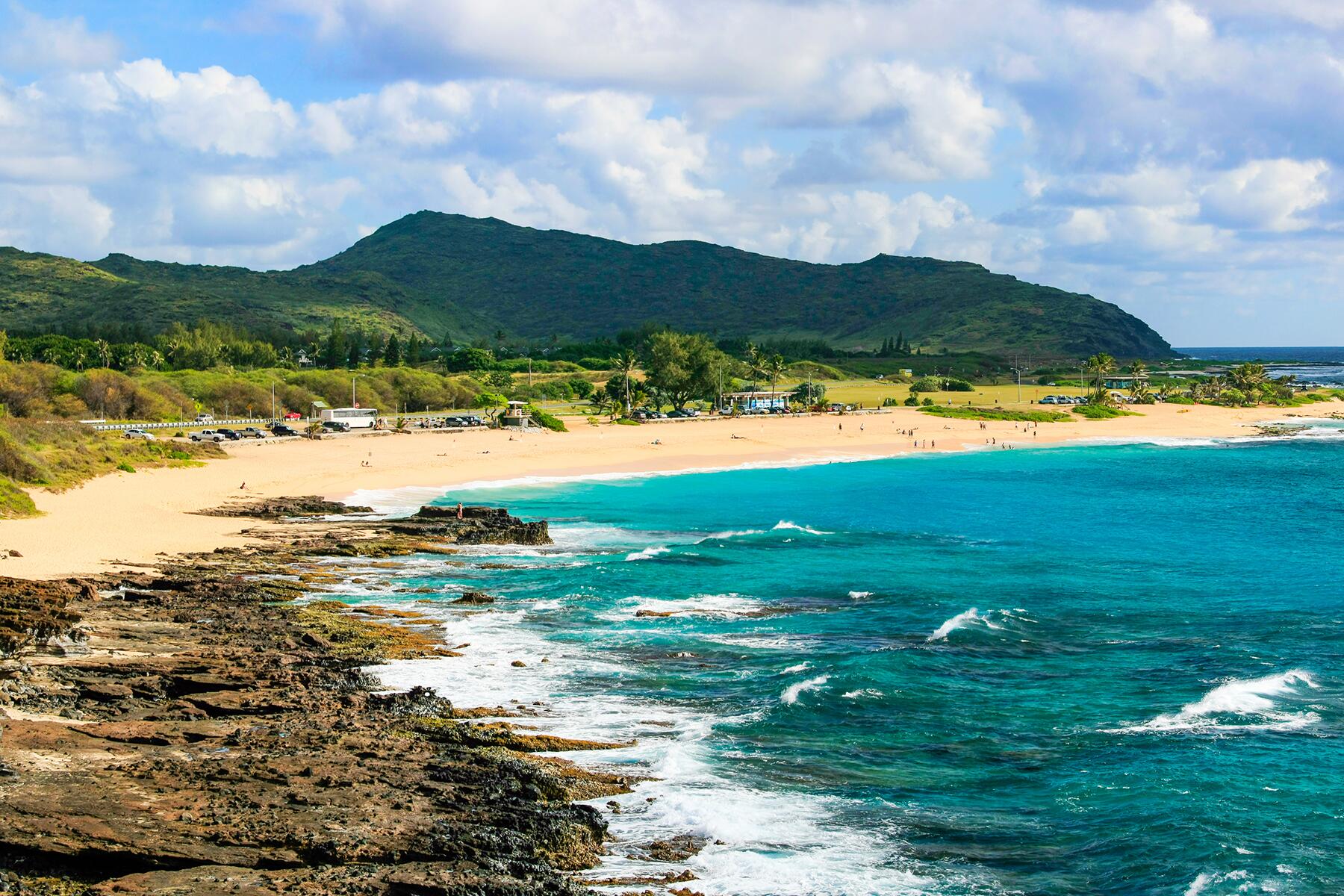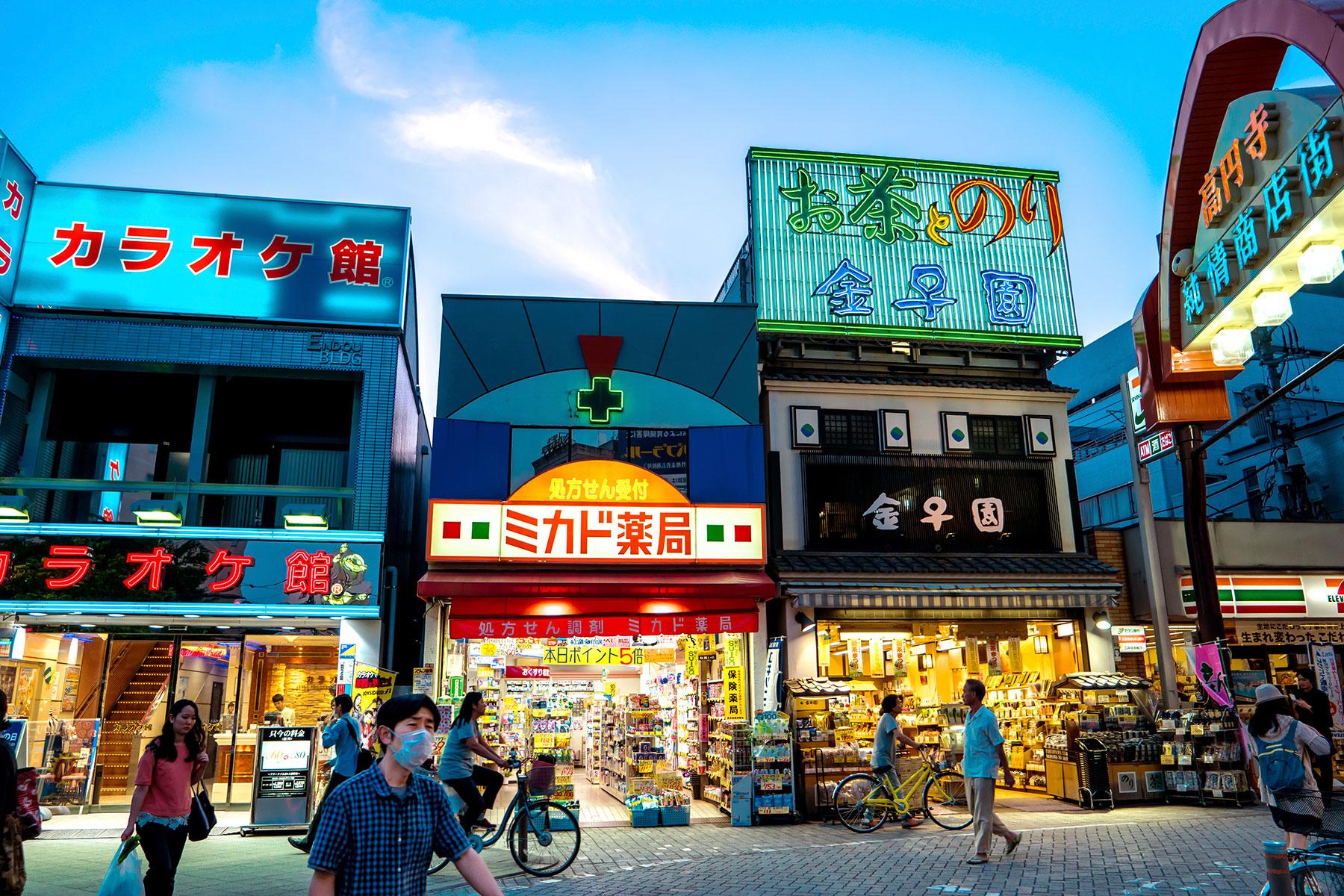From ancient shrines to modern cafes, wander the neighborhoods of Tokyo beyond the neon and find out what truly makes the city great.
Tourism to Japan is booming, and of course everyone wants to go to Tokyo—it’s one of the great cities of the world. What most don’t realize, though, is that a lot of what makes it great is beyond the well-worn tourist path. Beyond the neon and bright lights of Shibuya are intimate neighborhoods where real people live their daily lives, where you can visit updated versions of traditional shopping streets and stroll past temples and shrines. In these neighborhoods, hipster coffee shops coexist with generations-old shops making and selling traditional crafts.
Kiyosumi-Fukagawa
This old-fashioned, small-scale neighborhood has become known for the many modern independent coffee shops that dot the streets and alleys nestled in a mix of homes, shops, small businesses, and light industrial spaces. After a coffee break or two, you can explore two attractions: Near the Metro station, Kiyosumi Gardens is a typical Japanese garden laid out around a large pond, originally created in 1880. And the charming Fukagawa Edo Museum has a full-size Edo-period (19th century) town re-created on its lower level.
Tsukishima/Tsukudajima
Tsukishima is best known for its old shopping street that’s now dominated by restaurants serving monjayaki, the Tokyo version of the savory pancake called okonomiyaki that’s cooked at a griddle at your table. But it’s also a wonderful place to walk down the narrow side alleys full of old residential buildings and tiny shops. Short walks bring you to views of Tokyo Bay and to nearby Tsukudajima, where you can see small fishing boats on the canal and many more traditional buildings, including shops that have been in business since the nineteenth century, selling local specialty foods.
Recommended Fodor’s Video
Sugamo
Sugamo is nicknamed “Harajuku for Grannies,” a joke on neighborhood famous for trendy youth fashion. Grannies are frugal, so the low-key Sugamo Jizo-Dori shopping street is a good place to look for inexpensive and practical bags and umbrellas, and you can also find various traditional treats, including a whole tiny shop dedicated to sweets made with sesame. The area also specializes in shops with expansive displays of red underwear—not at all sexy, but guaranteed to bring you good luck. Sugamo’s mascot is Sugamon, a big white duck—don’t miss the booth at the start of the shopping street where you can rub his fuzzy (and huge) bottom for good luck, because there’s nothing weird about that at all.
Shibamata
This neighborhood has got all the Showa-era mid-twentieth-century nostalgia you could ask for packed into a very walkable space. The shopping street is lined with shops selling old-fashioned snacks and souvenirs including Kin no Unko, a lucky pile of golden poop. Taishakuten Temple offers a traditional garden and amazing wooden carvings on its exterior and the historic Yamamoto-tei mansion is an interesting combination of Western and Japanese styles. Shibamata is the home of an old-timey Japanese pop culture icon, Tora-san, whose statue greets you as you leave, and even though you never heard of him, the dioramas of street scenes at the Tora-san museum are a quirky delight.
Kita-senju
Get off at Kita-Senju and at first it looks like just another modern station development with all the department stores you can find everywhere else in Tokyo. But wander off onto the side streets and you’ll find remnants of old Japan, when the area was a stop on major routes from Edo (old Tokyo) to the rest of the country. A quiet walk north along an old shopping street to the west of the station takes you past several preserved wooden buildings that once housed merchants to the Arakawa river; on this street you can pick up a map in English at a tourist info station housed in an old fish shop. Elsewhere, other old buildings have been repurposed for modern businesses, including restaurants and cafes.
Along the Arakawa Streetcar Line
The Toden Arakawa Line is the only surviving true streetcar from what was once a large network in Tokyo. There’s no modern glamour to be seen as it meanders through many off-the-beaten-path residential neighborhoods, but if you have an eye for the beauty in shabbiness, you’ll want to get a seat by a window and settle in. Hop on and off to explore—for example, near the Waseda end, Zoshigaya Cemetery is the resting place of many historic figures including writer Lafcadio Hearn; stroll through it to get to Zoshigaya Missionary Museum, a preserved Western-style house. At the next stop, walk down an atmospheric tree-lined lane to Zoshigaya Kishimojindo Temple, with its owl statues and a nostalgic snack stand on its grounds that has been in business since the 18th century.
Kichijoji
Kichijoji always shows up near the top of the list of places where Tokyoites would most like to live. It’s got a youthful, Western-influenced vibe with lots of sidewalk cafes and cute boutiques. In Inokashira Park, known for its cherry blossoms, street performers appear on weekends and there’s a pond with paddleboats for rent and a small zoo. For a modernized version of a traditional Japanese shopping experience, check out the Sun Road shotengai (covered shopping street), and for a step back in time to the postwar years, spend an evening in the tiny old restaurants and bars in the alleys of Harmonica Yokocho.
Kagurazaka
Kagurazaka is still home to some of the geisha houses that clustered in the area in the Edo period, and it’s now also known for the influence of the local French expat community. As you stroll its picturesque cobblestone alleys and enjoy the atmosphere of traditional Japanese buildings, you’ll find ample choice of both high-end Japanese and French cuisine. Another unusual fusion of old and new can be seen at Akagi Jinja, a 700-year-old shrine with a new building constructed in 2010 that has even got its own Italian-style cafe. If you find that glass-walled modern design a shock to the system, find your way back to Bishamonten Zenkokuji Temple on the main street for a traditional antidote.
Jiyugaoka
Stylish and sophisticated with a strong European accent, Jiyugaoka is famous for sweets: it’s the birthplace of the Japanese version of the Mont-blanc dessert. The Green Street promenade is lined with trees and benches as well as boutiques and cafes, and there’s a little imitation-Italian shopping complex with an actual canal and gondola. If all that leaves you feeling like you miss Japan, stop in at the beautiful century-old Kosoan tea house, or take a side trip to Kuhonbutsu temple and its spacious grounds, where some trees are said to be hundreds of years old.
Koenji
Known as the birthplace of Japanese punk, Koenji still has an active underground music scene and a somewhat retro feel, with plenty of places to eat and drink and shop, especially for used clothing, books, and music. Part of Suginami ward, which promotes itself as “Anime City” for its dozens of animation studios, you can also take a side trip to the Suginami Animation Museum in nearby Nishi-Ogikubo. There’s also the chance to experience older Japanese tradition if you’re in town at the right time: in August, the Koenji Awa Odori is the second largest dance festival in the country, begun in the 1950s and modeled after the original massive gathering in Tokushima. Be prepared for the crowds, though: the 10,000 dancers are estimated to attract over a million spectators.
Shimokitazawa
The hippies of 1960s Tokyo left Shimokitazawa with a reputation as a countercultural enclave, although the fact that it’s often compared to Brooklyn may hint at the fact that commercialization is alive and well in the area as well. This hipster haunt offers indie shops, hand-made goods, art, vintage thrift stores, cafes, theater, and live music. Just a few minutes from Shibuya, it’s much more small-scale and laid back—think wandering the alleys of the old parts of town, but for the younger and more bohemian. If you’re visiting in August, try to catch the Shimokitazawa Awa Odori. Similar to the Koenji festival but less overwhelming, traditionally attired dancers march through the streets and alleys.
Along the Setagaya Streetcar Line
The Setagaya tram line is the only other remnant of a streetcar line left in Tokyo. You can spend the day getting on and off, exploring quiet residential neighborhoods and local shopping streets. One is Sangenjaya, considered hip and lively but more laid-back than nearby Shibuya, with lots of places to eat that include Suzuran street, an alley of small bars and restaurants. Gotokuji Temple is famous for its somewhat surreal collection of hundreds of beckoning cat statues of all sizes. On a few weekends in December and January, you can shop at the Setagaya Boroichi, a huge traditional street market that has been around for over 400 years. Over 700 stalls sell all kinds of used goods, crafts, and food.





